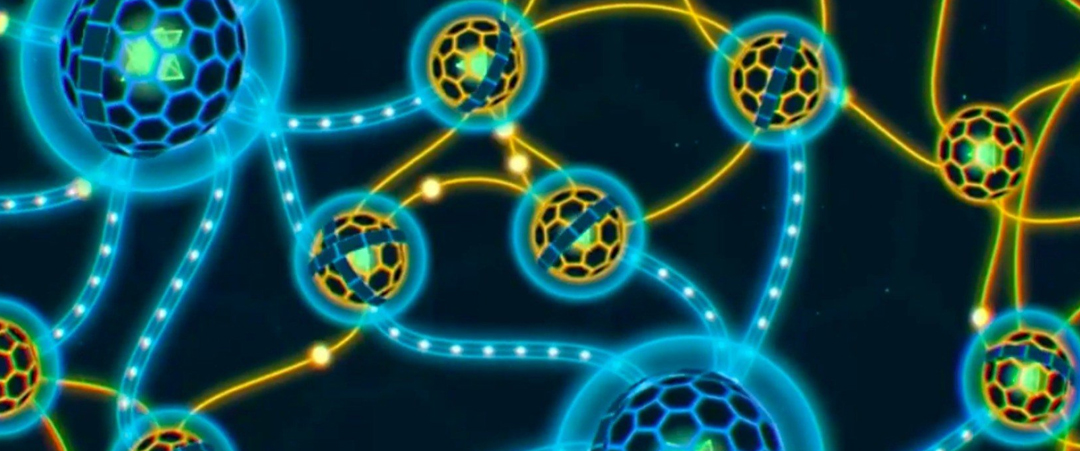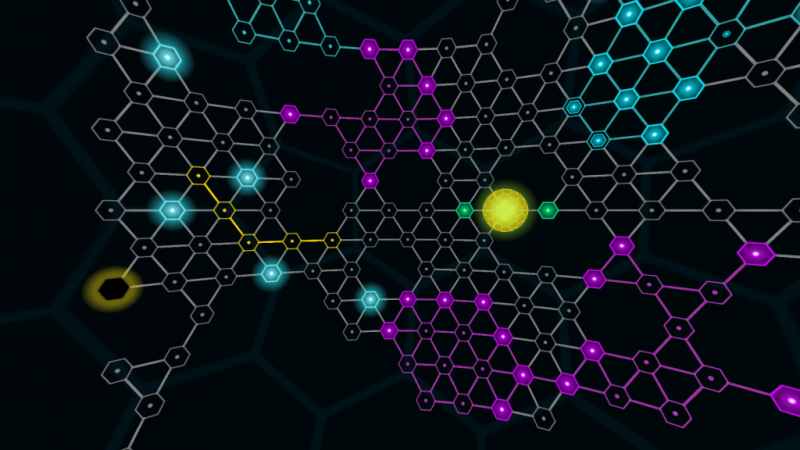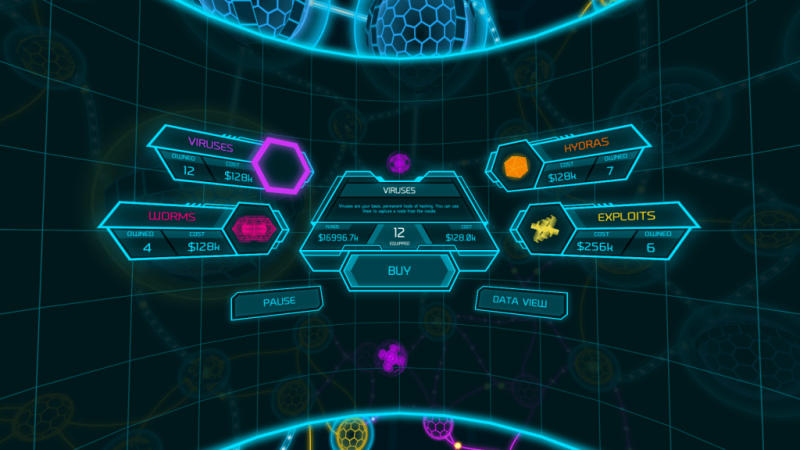Darknet Review (PSVR)
For the purposes of transparency, this review was created using a code provided by the company or their respective PR company. The use of a review code does not affect my judgement of the game.
Darknet is a VR hacking game that has finally made its way to the Playstation VR. Hacking is something that has been in many games across the last few generations, but most of these are just a small part mini-games, and that’s exactly what they feel like. Does Darknet offer more than that?
The game doesn’t have a story per-say, you are ultimately a hacker trying to get into systems to take their money – with the goal of making your system stronger, even-though no reason for this is explained. Although there is no direct story and more of goal, the game does take time and effort to build a world you are placed in. They do this by making news stories available on the main menu, which show the effects your hacking is having on the world.
Once it’s loaded you are placed inside of the internet surrounded by connection point’s and nodes, some of which are shielded. This is where that Tutorial starts, as the game takes time to get you used to what you are doing, and the tools you have at your disposal, which is voiced by the guy behind Duke Nukem (Jon St. John). Even looking around you in the tutorial there is loads of node’s to hack, but it does explain the main aim is to hack the root node. Completing the tutorial then opens the cloud system, in the cloud system there is a number of networks to hack and complete, but you are given set times to complete the hack – this is where the game really opens up. Each network inside the cloud has different difficulties, so it really does require some strategy and planning to get to the root node before you time runs out.
The gameplay is hidden behind each node, when you select one you are taken into that node to complete a mini-game. The mini-games are all the same, but they will rise in difficultly and size depending on what you are hacking, and if they’re shielded (representing firewalls). Each puzzle is grid-based and will consist of a number of blue nodes and a yellow core, you will then select the blue nodes you want to hack with a virus – you can do more than one at a time, depending on how many viruses you have at your disposal. Once you initiate the hack, purple nodes start to travel across the grid, until they either reach the yellow core in turn ending the mini-game, or one of the remaining blue defence nodes are activated and that wipes out your hack. The puzzles become more difficult as you have to start planning sending your viruses out in waves to wipe out defence nodes before your final viruses attempt.
As I mentioned above later you will find yourself planning and sending out viruses in waves, this is where more comes into the gameplay. Each node you hack will have a market value attached to it, once you successfully hack that node that money is transferred to you. You will then use this money to buy new tools like viruses, different types of hacks, and hydras – which all described in the tutorial to make the use of these make more sense. But, in the examples I have given the hacks are essentially cheat codes, and hydras can clear lesser nodes for you. The use for hydras can be important say if you need money for more viruses quickly, or even need to take a smaller node out quickly due to time running out.
One thing Darknet VR has done well with the gameplay is, with getting more money and being able to buy tools to help, it really gives the player a feel that they are progressing.
Visually they have gone with a simple look, which to me looks very TRON-esc, but for what Darknet is going for this does work well. I feel that the over use of 3D just for the fact is was VR would have made the game less immersive for what you are essentially doing, and they have clearly put a lot of work and polish into the 2D retro-style design. When you first choose which network to start from in the cloud menu, it is easy to see why they made the game in VR – you will just look all around you planning your best move and start point. The transitions into the nodes is well done, and adds a little to the immersion of the VR experience.
Control wise the game is played using the Dualshock 4 controller. The controls are simple, but also come with a few issues. The only buttons you are going to find yourself using are the analogue sticks, the X and Circle button – other than this you see the controller on the screen with a pointer on it, you just move the controller about the screen to select everything.
While in the network, you choose the node by getting the pointer on the one you want, and then press the X button. Then when in the node you do the same, point at the defence node you want to place the virus on and press X to place it. Once you want to set the virus off, you point to the node core and press X – then if you fail you will use the Circle button to retry, or if you complete it the same button will exit the node. While either in the network or node you can use the left analogue to turn – although I found this was only needed in the network. This is because the nodes completely surround you, so it’s used for turning the view to get to the other nodes throughout the network. Also while in the network you can buy all your additional viruses, hacks and hydras by pressing the Circle button.
Now where the simple controls work in the most case, as I mentioned there is a few issues linked with it. The first one is with changing what you are wanting to use, if you decided you wanted to use a hydra you have purchased at a different time, you have to go into the shop menu with the Circle button and equip it from there – then do the same again to get on your viruses. This can take up valuable time in the timed element of the game, and could have easily been resolved with another button being used to quick swap what you are using. As with the switching of tools, the next one resolves around time as well, which is the turning system. When you turn in either the network or node it has a transition, this only last for only about one second where the screen goes black and then fades back, even-though this is minimal it can sometimes throw you off.
Maybe the fade to black when turning was implemented for comfort when gaming in VR, because maybe quick turning could cause motion sickness. Leading to one thing I can say about the game, it will not cause anyone any sort of discomfort or motion sickness – due the very limited movement that happens in the game.
One great thing about Darknet is it is a massive game, I took the all the time possible on the tutorial completing every node, and personally think given the length of experiences on VR at the moment – that would have sufficed for some companies. But, one issue the game might face in regards to longevity is the puzzles are all very similar, meaning some people might think they’ve done everything they can once they’ve completed the first few networks. But, if you want to complete it all, there is a huge amount of gameplay included, and to me the challenge of doing all the networks was worth the time. However, I don’t think it is something you would return to once all the networks have been completed.
Another thing they’ve done well is implementing a save and quit function, even if you are part way through a network you can do this, and return exactly where you left of the last time. This opens the game up to people who want to complete a network one they’ve started it, or those who want a pick and play element to the game, only doing a few nodes at a time.
Conclusion
Darknet gives players what they want in a hacking game, and offers a large amount of content and challenges for the players who want to complete every network. But, its downfall in this area is the repetitive gameplay, meaning some players will feel they’ve seen all the game offers early into the experience. The simple and polished 2D retro-style design works well with what they are essentially trying to achieve, but means the game could have essentially worked in non-VR also.
Also available on HTC Vive
Developer: E McNeill
Article originally created for http://www.gamesbulletin.uk








